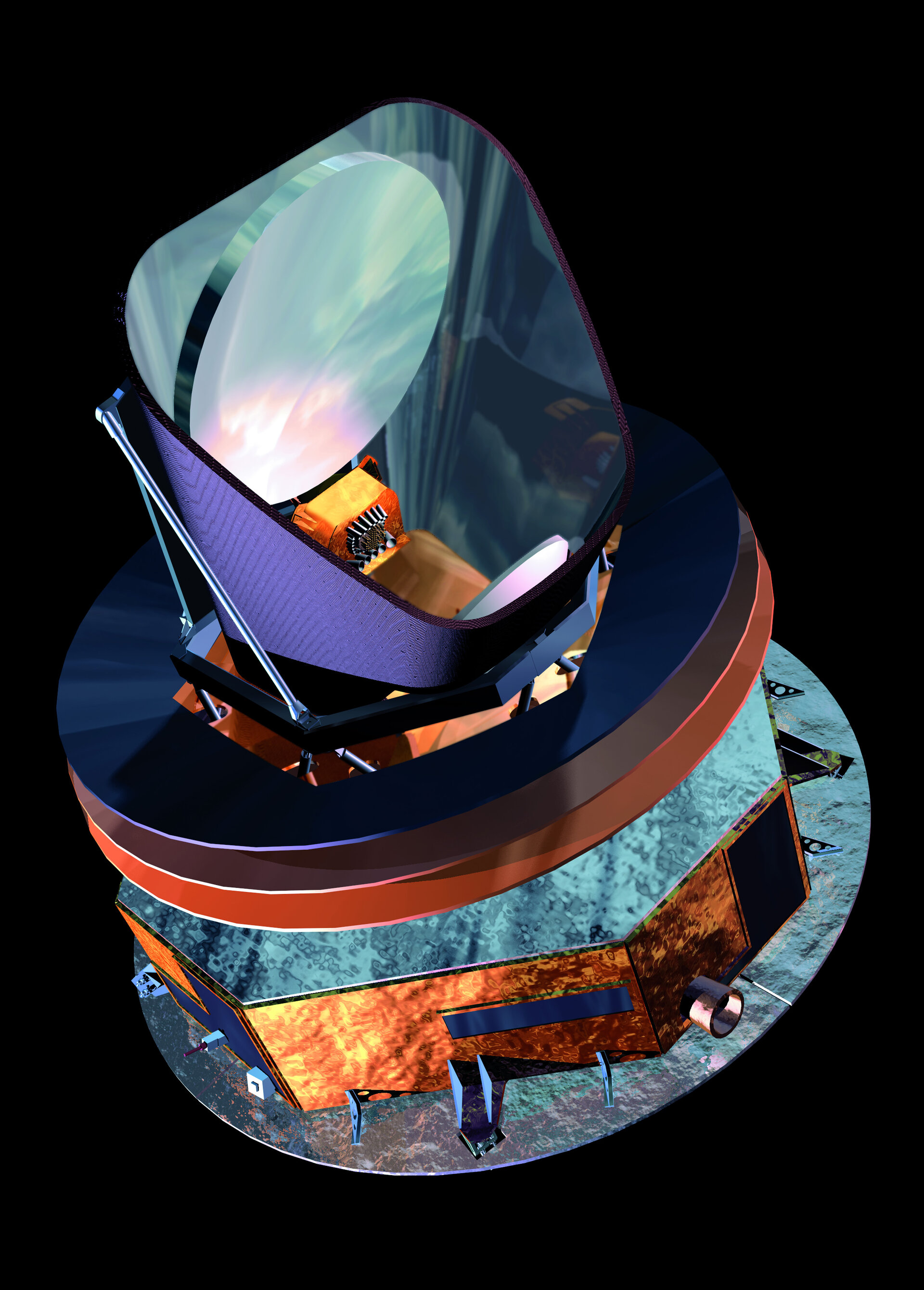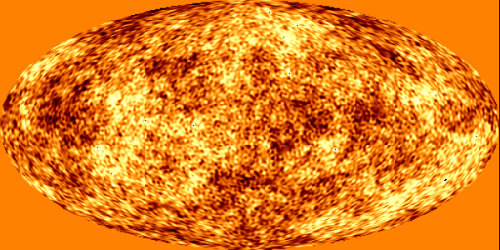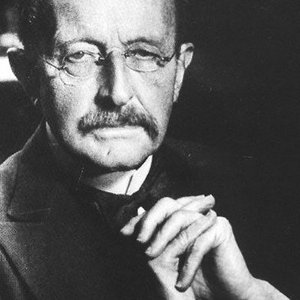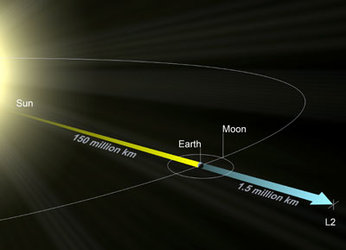ESA's 'time machine'
The Planck spacecraft will be ESA's 'time machine'. Using it, astronomers will be able to ‘travel’ back in time, towards the beginning of space and time as we know it.
Due for launch in 2007, Planck will look back at the dawn of time, close to the Big Bang, and will observe the most ancient radiation in the Universe, known as the ‘Cosmic Microwave Background' (CMB).
Planck will analyse the CMB for clues about how galaxies and clusters of galaxies formed. Its ultimate goal will be to help astronomers in deciding which theories of the birth and evolution of the Universe are correct.
Some of the key questions Planck will help to answer are: What are the basic constituents of the Universe? What is the nature of 'dark matter' (which may account for more than 90 percent of the total amount of 'normal' matter in the Universe but that has never been detected directly) and what is 'dark energy' (a mysterious form of energy which makes the Universe's expansion accelerate)? Did the period of rapid expansion which is thought to have originated the Universe we see, known as inflation, really occur ?
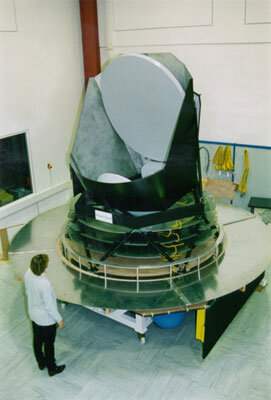
Planck will be doing this by examining the CMB with an accuracy never achieved before. CMB radiation does not originate from one object in particular, but from the whole Universe. It is actually the first light that existed freely in the Universe.
For this reason, it can be detected today as coming from everywhere in the sky. Observing the 'first light' today, as the CMB, is like seeing the Universe as it was only 300 000 years after the Big Bang.
Planck is designed to 'see' the microwaves and, in practice, it will detect them by measuring temperature. That temperature is already known to be about 2.7K (which is very cold, about –270°C, near absolute zero). It has in fact been measured to be 2.726K all over the sky to three decimal figures. This degree of accuracy in the measurement may seem good enough, but much more precise measurements are needed.
Scientists know, from previous observations, that slightly hotter or colder 'patches' appear in the sky (different by one part in 100 000). Again, this may seem like a small difference, but these differences in temperature are nothing less than the imprints left in the CMB by the primeval 'seeds' of today's huge concentrations of matter — the galaxies and galaxy clusters for example.
The information Planck has to gather lies in the pattern formed by these slightly hotter and colder regions, called 'anisotropies' or 'inhomogeneities'. As a consequence, the Planck detectors will have to be highly sensitive and will have to work at temperatures very close to the absolute zero, otherwise their own emission of heat will spoil the measurements.
Planck will carry a telescope with a 1.5-metre primary mirror. The telescope will focus radiation from the sky onto the payload, two highly sensitive arrays of detectors called the High Frequency Instrument (HFI) and the Low Frequency Instrument (LFI).
The HFI includes a set of 52 bolometric detectors, which work by converting radiation to heat. The amount of heat is then measured by a tiny electrical thermometer, the signal from which is converted to a temperature value by an on-board computer. They are operated at –272.9°C (only one tenth of one degree above absolute zero). The LFI includes a set of 22 radio receivers that will be kept at –253°C. A complex system of on-board refrigerators is used to reach these very cold temperatures.
Planck will be placed into a final orbit about 1.5 million kilometres away from Earth at a point called 'L2'. This is far enough away to avoid the undesirable emission of heat from Earth, the Moon and the Sun which would cause too much interference in the measurements.


